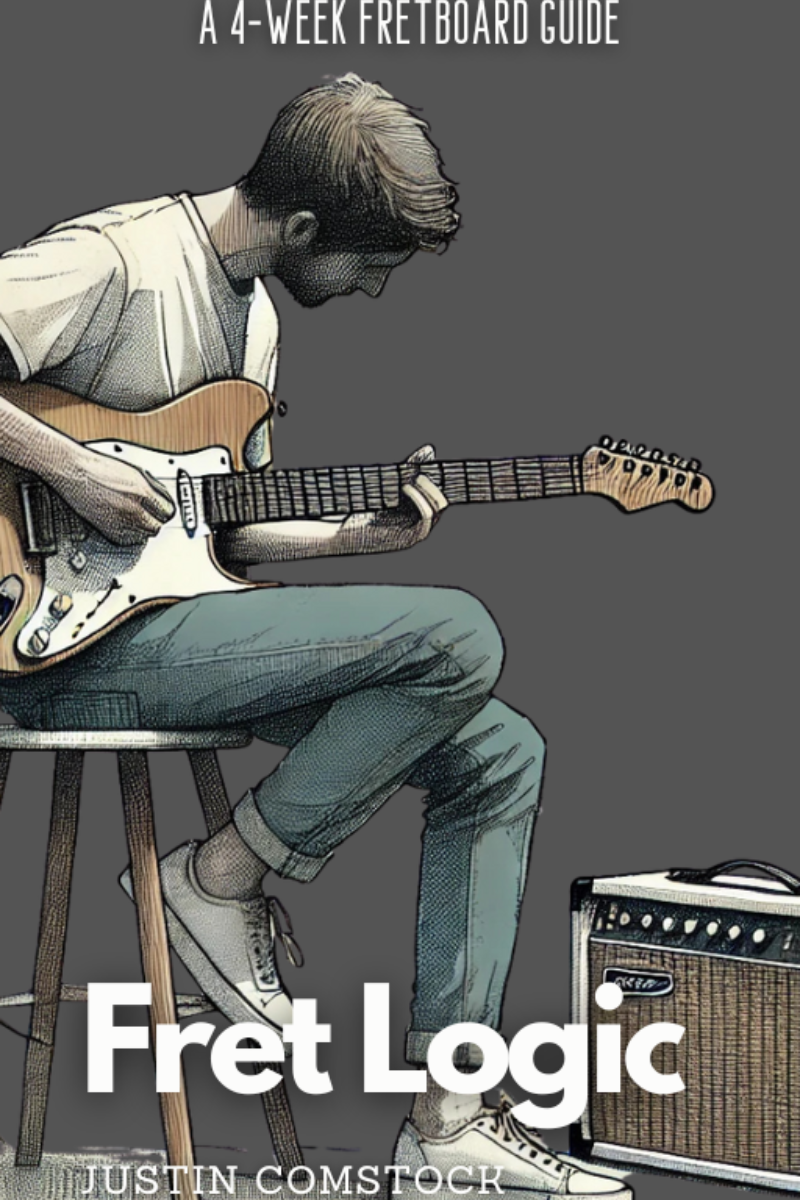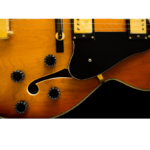Why Most Guitarists Get Stuck
Here’s the truth: most people fail at guitar because they think memorizing hundreds of shapes will unlock mastery. It won’t.
The real secret? A few essential guitar chords, practiced relentlessly, until your hands stop thinking and start playing. That’s the foundation of all great lessons for guitar.
If you’ve been bouncing between random tutorials, consider this your reset button. Let’s strip away the noise and focus on what actually works.
Today you’ll learn:
✅ Which guitar chords unlock 80% of songs
✅ Why smooth transitions matter more than memorization
✅ How to map the fretboard using the Circle of 4ths
✅ The essential intervals every guitarist should know
✅ Why FretDeck™ and our Discord shortcut your progress by months

❌ Stop Guessing. Start Shredding.
If you’re still fumbling through scale patterns and box shapes… it’s costing you progress.
FretDeck™ is the no-fluff system that shows you exactly how to master the fretboard—fast. Early access.
⚡️ This isn’t for dabblers. It’s for players who want results.
👉 Click here to join the pre-launch now
Early access. Limited rewards. Don’t wait.
Map the Fretboard with the Circle of 4ths
Instead of guessing your way around the neck, use the Circle of 4ths. Here’s how:
- Pick a string.
- Start on C. Play C, F, B♭, E♭, A♭, D♭, G♭, B, E, A, D, G.
- Say each note out loud while you play it.
This simple exercise wires your hands and brain together. It builds memory faster than mindless repetition.
Pro Tips:
- Use a metronome. Start slow (4 beats per note) and shorten the gap over time.
- Don’t stare at the neck. Glance if you need, but keep your eyes forward.
- Run the exercise on all six strings.
Spend a week with this method, and you’ll know the fretboard more deeply than months of random noodling.
👉 Want a visual way to practice? FretDeck™ has Circle of 4ths drills built right in.
Chords: The Bedrock of Every Lesson for Guitar
Before you dive into flashy scales or solos, you need chords. Chords power every genre:
🎸 Rock anthems? Chords.
🎸 Folk ballads? Chords.
🎸 Blues shuffles? Chords.
Master a few, and you’ll unlock 80% of songs.
The Big Five Open Chords:
- G Major – staple of rock and pop.
- C Major – perfect for ballads.
- D Major – crisp and bright.
- E Minor – simple, huge-sounding.
- A Minor – emotional and soulful.
Transition smoothly between them, and you’ll sound like a real musician fast.
Beyond Basics: Power Chords & Triads
Power Chords give you instant rock energy. One shape = infinite movement across the neck. Palm mute for that classic crunch.
Triads are the secret sauce of pro rhythm players. They:
- Simplify complex chords
- Teach smooth voice leading
- Open up the fretboard
Example: G major triad on top three strings (3rd fret B, 4th fret G, 3rd fret high E).
👉 FretDeck™ includes both triad and power chord practice prompts.
Map Intervals to Unlock Music Theory
Intervals are the DNA of music. Learn them on the fretboard, and you’ll understand how chords, scales, and melodies connect.
For example, starting with an E on the 7th fret of the 5th string:
- Minor 3rd: three frets up, or one string over/two frets back.
- Perfect 4th: one string over, same fret.
- Perfect 5th: one string over, two frets up.
- Octave: two strings over, two frets up.
Once you internalize intervals, you’re no longer guessing—you’re making choices.
Why the B String Trips You Up
The guitar is tuned mostly in 4ths… until you hit the B string. Between G and B, it’s a major 3rd. That small shift changes shapes and fingerings.
Pro players know how to compensate. Keep this in mind: whenever an interval crosses the B string, shift your note one fret higher.
Smart Practice: How to Actually Improve
Memorizing shapes is easy. Transitioning smoothly is what separates beginners from players. Here’s the formula:
✅ Start slow. Accuracy > speed.
✅ Use a metronome.
✅ Loop chord progressions (try G–C–D–G).
✅ Don’t stop for mistakes—keep strumming.
✅ Anchor pivot fingers for faster transitions.
✅ Learn songs. Apply theory to music you love.
Why FretDeck™ Outpaces Random Lessons for Guitar
YouTube videos scatter your focus. FretDeck™ creates clarity.
With 60 scale cards, chord diagrams, and practice prompts, it’s the no-fluff system for mastering the fretboard. No guesswork. No overwhelm. Just results.
🔥 Bonus: Backers get exclusive video lessons + entry into our private Discord: Guitar Freaks Hangout.
👉 Unlock FretDeck™ now on Kickstarter.

❌ Stop Guessing. Start Shredding.
If you’re still fumbling through scale patterns and box shapes… it’s costing you progress.
FretDeck™ is the no-fluff system that shows you exactly how to master the fretboard—fast. Early access.
⚡️ This isn’t for dabblers. It’s for players who want results.
👉 Click here to join the pre-launch now
Early access. Limited rewards. Don’t wait.
Guitar Freaks Hangout: Your Creative Circle
Don’t practice in isolation. Inside our private Discord, you’ll:
- Share progress clips
- Get feedback from real players
- Access exclusive guides
- Jam with other guitarists
Plus: Download Fret Logic (80 pages of fretboard mastery) FREE when you join.
👉 Join Guitar Freaks Hangout today.

Join Guitar Freaks Hangout on Discord! 🎸
Get Fret Logic FREE!
Join the Guitar Freaks Hangout Discord and get exclusive access to my entire e-book, Fret Logic! Master the fretboard and elevate your solos with this comprehensive guide.
👉 Don’t miss out—join now and download your free copy!
Final Takeaway: Keep It Simple
You don’t need hundreds of chords. You need a few that you can switch between effortlessly. Layer in fretboard mapping, intervals, and smart practice, and you’ll sound like the guitarist you’ve always wanted to be.
✅ Next Steps:
- Grab FretDeck™ (for serious players only)
- Join Guitar Freaks Hangout (get Fret Logic free)
- Explore more lessons for guitar on our site—check out Simple Guitar Chords for Beginners for your next step. And for an external deep dive, see this Ultimate Guitar Guide to Chords to expand your learning.
Stop guessing. Start shredding.
Your fretboard story starts now.










